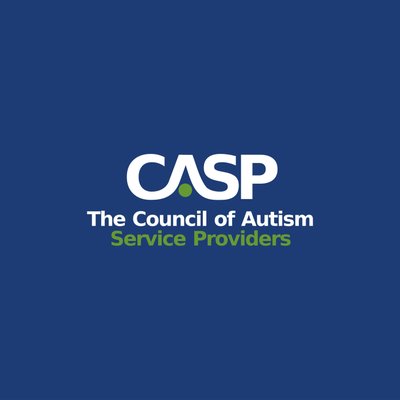Hypertonia is a condition characterized by an abnormal increase in muscle tone, leading to stiffness and difficulty with movement. It can present as either spasticity or rigidity, affecting different parts of the body and is sometimes associated with fragile X syndrome, a genetic condition linked to developmental challenges.
While hypertonia is not exclusively linked to any one condition, it is often observed in children with autism. Autism, on the other hand, is a neurodevelopmental disorder that impacts social interaction, communication, and behavior. When hypertonia co-occurs with autism, it can present unique challenges for diagnosis and treatment.
What is Hypertonia?
As mentioned earlier, hypertonia is a condition where there is excessive muscle tone, resulting in stiffness and difficulty in moving. The condition can affect a single muscle group or multiple muscles, making it difficult for a person to perform everyday tasks such as walking, grasping objects, or even sitting comfortably. Hypertonia is often classified into two main types:
- Spastic Hypertonia: This type is characterized by increased muscle tone that is more pronounced during voluntary movement. It is often seen in individuals with neurological disorders.
- Rigidity: In this type, muscle tone remains consistently high, even when there is no movement, and it can cause a jerky motion when the affected person tries to move.
Hypertonia can result from various neurological disorders, brain injury, or genetic conditions. In the context of autism, hypertonia may not always be immediately recognized as it can be confused with other movement-related challenges.
That said, the symptoms of hypertonia vary depending on the severity and type of the condition. Common signs include:

For those with autism, the manifestation of hypertonia may be subtle, and it is sometimes overlooked as part of the broader range of motor difficulties common in autism.
The Connection Between Hypertonia and Autism
While hypertonia is not a core symptom of autism, there is a notable overlap between the two conditions. Muscle tone abnormalities, such as hypertonia, can manifest in individuals with autism as part of their broader motor challenges.
Studies have suggested that certain neurological mechanisms and genetic factors may underlie both conditions, which could explain the co-occurrence of hypertonia and autism in some individuals.
The exact relationship between autism and hypertonia remains unclear, but it is believed that the brain regions responsible for motor control, such as the basal ganglia, may be involved in both conditions. These regions play a role in regulating muscle tone, movement, and coordination, all of which are often impacted in individuals with autism.
Diagnosing Hypertonia in Children with Autism
Diagnosing hypertonia in children with autism can be challenging, as many of the signs of hypertonia overlap with the typical motor difficulties associated with autism. A thorough evaluation by a healthcare provider is essential to distinguish between hypertonia and other motor issues commonly seen in autism.
A healthcare provider will typically begin by taking a detailed medical history and performing a physical examination. They may assess muscle tone by manually moving the child’s limbs through their range of motion and observing the resistance.
If hypertonia is suspected, additional tests are conducted such as:
- Neurological Assessments: These can help determine if the hypertonia is related to a neurological condition.
- Brain Imaging: MRI or CT scans can be used to detect any structural abnormalities in the brain that may contribute to hypertonia.
- Genetic Testing: In some cases, genetic testing may be recommended to identify underlying genetic conditions that could cause hypertonia.
Role of Occupational and Physical Therapists
Physical and occupational therapists play a crucial role in the diagnosis and treatment of hypertonia in children with autism. They can assess motor skills, coordination, and muscle tone, offering insight into whether hypertonia is present and how it affects the child’s daily life.
While there is no cure for hypertonia, various treatment options can help manage the symptoms and improve the quality of life for individuals with both hypertonia and autism. The treatment approach may vary depending on the severity of the hypertonia and the needs of the individual.
Therapy is one of the most effective treatments for hypertonia, especially when it comes to improving mobility and muscle flexibility. Physical therapists can guide individuals through exercises that target strengthening and stretching.
Occupational therapists can assist with daily living activities by teaching strategies to overcome the limitations caused by hypertonia.

Medications for Hypertonia
In some cases, medications may be prescribed to help manage hypertonia. Muscle relaxants, such as baclofen or diazepam, can reduce muscle tone and improve mobility.
Additionally, medications used to manage other symptoms of autism, such as antipsychotics or selective serotonin reuptake inhibitors (SSRIs), may also help with co-occurring motor issues like hypertonia.
Botulinum toxin (Botox) injections can sometimes be used to treat localized hypertonia. The injections help reduce muscle stiffness by temporarily paralyzing the muscles responsible for the tightness. This can help individuals achieve better mobility and reduce discomfort.
In rare cases where hypertonia is severe and other treatments have not been effective, surgical options such as tendon release or nerve surgery may be considered. These surgeries aim to alleviate muscle tightness and improve function.
Along with medical treatments, individuals with autism and hypertonia benefit from a multidisciplinary approach that includes support from behavioral therapists, speech-language pathologists, and other professionals. These interventions can help address both the physical and behavioral aspects of the conditions.
Conclusion
Hypertonia and autism are two distinct conditions, but they often intersect in ways that complicate diagnosis and treatment. Understanding how hypertonia manifests in individuals with autism is critical for providing appropriate care and improving outcomes.
Through early intervention, therapy, and targeted medical treatments, individuals with both hypertonia and autism can lead more functional and fulfilling lives.
If you or someone you know is affected by autism and hypertonia, it’s important to consult with healthcare providers who specialize in both neurodevelopmental and neurological disorders.
Addressing both conditions simultaneously will make it possible to create a comprehensive treatment plan that targets all aspects of the individual’s health and well-being. At Golden Care Therapy, we provide high-quality ABA therapy tailored to each person’s unique needs, ensuring meaningful progress and lasting results.
Our expert team is dedicated to supporting individuals and families with compassionate, evidence-based care. If you’re looking for autism services in New York, New Jersey, Indiana, Georgia, or Florida, give us a call. Contact us now so we can work together to create a personalized plan that truly makes a difference.
Sources:



